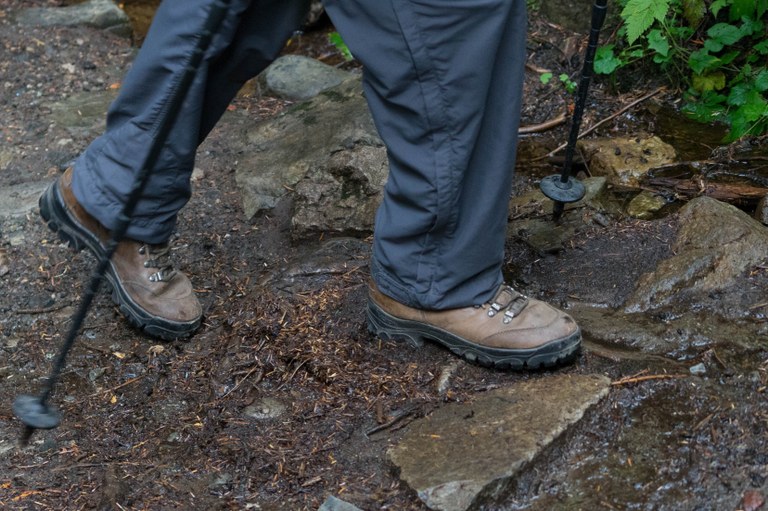Search and Rescue’s Tips for Wet-Season Hiking
Here are a few scenarios you might encounter while hiking in the wet months — and how to avoid having to make that 911 call for search and rescue.
By Christine Nelson
With the sun low in the sky and the weather trending cool and rainy, late fall and early winter offer many hiking opportunities. Trees bare of leaves reveal wider views. Rain and wind rustle foliage. Snow begins covering higher terrain, but many trails remain open and inviting. Are you ready for enjoyable, safe outdoor adventures in this wet season?
Search and rescue (SAR) teams receive most of their calls for help during the peak months of May through September. But no matter the time of year, the most common reasons hikers have to make that call stay the same — injuries or being lost or stranded. Here are a few scenarios you might encounter while hiking in the wet months — and how to avoid having to make that 911 call for SAR.

The right gear, like boots, trekking poles and rain gear, can make winter hikes safer and more comfortable. Photo by Mik Metzler.
Slips and falls
Loose dirt, gravel and rocks are present year-round. Rain, wet leaves and frost or ice are the perfect recipe for slick trails. That “I slipped and fell” moment can result in serious injury.
What to do? Wear shoes or boots with good support and grippy soles; use traction devices on snow or ice. Trekking poles will help you keep your balance. Watch those slick spots and step carefully — especially when traveling downhill, in stormy weather or after dark.
Getting lost
We frequently hear distress calls from hikers that sound something like this: “I lost the trail; it just disappeared” or “It got dark and my light went out!” Causes? Not having a map or trail app or not really knowing how to use them. Too many rely on a cell phone as the single source for maps, calls and a light after dark.
What to do? Review and understand the route on the map: distance/altitude gain, trail junctions and landmarks. Unofficial trails (sometimes found on social media) often aren’t maintained or don’t have signs. They aren’t a good choice. If the trail becomes hard to follow or obscured by snow or brush, turn around, unless you are confident and experienced with cross-country wayfinding. Start hiking early in the day to give yourself ample time to return to the trailhead before dark or go prepared with good route-finding skills plus lights (and spare batteries) for hiking after dark.
Help us help you
In hiking emergencies, communication is vital. Even on close-in trails, cell phone reception may be blocked by terrain. Several calls for SAR last summer came from family members reporting that their missing loved ones had not returned home as planned.
What to do? No matter what your wilderness adventure, always leave a trip plan with a trusted friend, including an agreed upon “overdue” time to call 911. Carry a locator beacon or a satellite signaling device; they’re an invaluable way to reach out for help.
During search and rescue missions we meet many wonderful hikers. When a SAR team must move a litter slowly along a narrow trail, we appreciate hikers’ understanding, patience and friendly remarks. I also extend a huge thank you to the hikers who have come to the aid of others on the trail by helping call 911, sharing essential supplies and providing comfort until SAR teams arrive. The goal for an outing goes beyond reaching a peak or a landmark in the wilderness; success is safely returning home.
Christine’s first backpacking trip at age 4 in Olympic National Park started her lifetime of outdoor adventures. She enjoys hiking, skiing, snowshoeing, horseback riding and camping. She’s a WTA member, a retired U.S. Air Force officer and an active volunteer with the King County Search and Rescue Incident Support Team.


Comments